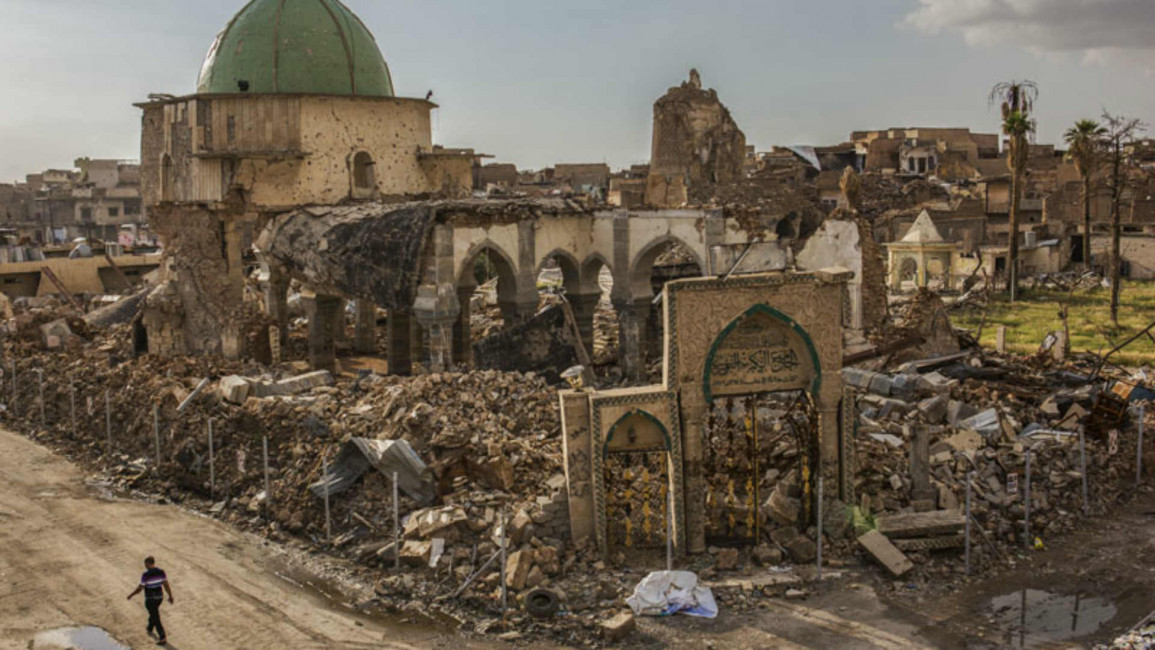
'Our Mosul will be alive again': After IS, Mosul vows to restore its great monuments
Many of Mosul's historic monuments have been severely damaged or completely destroyed during the Islamic State's occupation of the city and the battle for its "liberation" in 2017.
The connection between these monuments and Mosul's citizens runs deep, and so does their will to restore them to their former glory.
"When IS blew up Nabi Yunes Mosque dedicated to Prophet Jonah [who is buried in Mosul], in July 2014, I thought that this was the moment a rebellion against IS could have happened. But it didn't," Faisal Jaber, a geologist told The New Arab.
"When the mosques, the churches, the synagogue and the archaeological sites are renewed, that's the moment when our Mosul will be alive again."
Mosul's monuments are many, and reflect its vibrant multi-cultural ang long history: Imposing mosques, ancient synagogues, grand palaces and even a Catholic church line its streets, none however remained unscathed from its years of IS rule or the merciless battle to reclaim it.
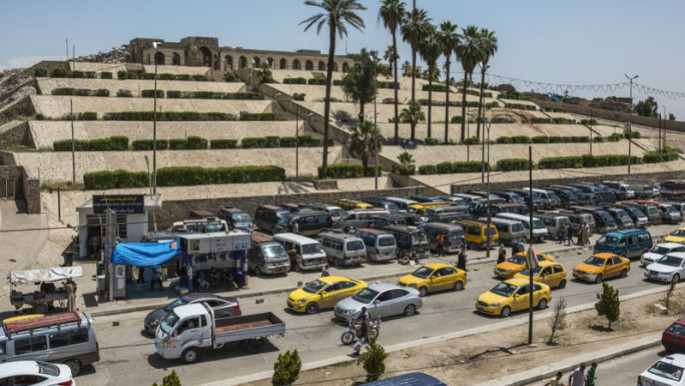 |
|
The Nabi Yunes Mosque was blown up by IS in 2014 [Alessio Mamo]
|
The former site of the Nabi Yunes Mosque (pictured above) was blown up by IS on the July 24, 2014.
The mosque was situated at the top of this ancient Ziggurat-like hill, which has been home to many different civilisations throughout history.
When built, the mosque replaced an Assyrian Church believed to be the burial place of the Prophet Jonah (Nabi Yunis in Arabic), called Jonah's Tomb. The palace had been originally built during the reign of the Assyrian King Esarhaddon (681-669 BC).
In March 2017 after IS was driven out of Mosul, a system of tunnels about a kilometre long dating back to Assyrian rule was found under the mosque.
Although the tunnel had been looted of ancient treasures, the Assyrian reliefs and carvings were still visible on its the walls.
Jonah is considered the patron of Mosul, so when the mosque was destroyed by IS, many locals were inflamed, but weren't able to rebel against the militant rulers.
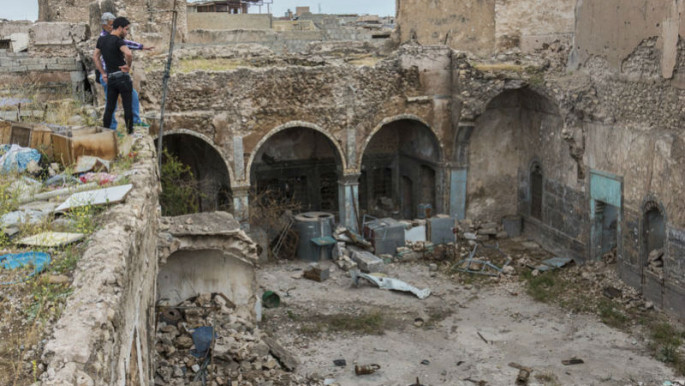 |
| The Old Synagogue of Mosul dates back to the 13th century [Alessio Mamo] |
The Old Synagogue of Mosul (pictured above) is located in the city's ancient Jewish neighbourhood and dates back to the 13th century.
The Jewish community of Mosul, also referred to as the ancient biblical town of Nineveh, is thought to have formed in the 8th century BC.
Desecrated and abandoned over the past half century, especially after Jewish people were forced out of Iraq following Israel's creation in 1948, it is now surrounded by other destroyed buildings of the Old City following the Battle of Mosul last year. Houses in the neighbourhood still contain Hebrew inscriptions signifying their Jewish origins.
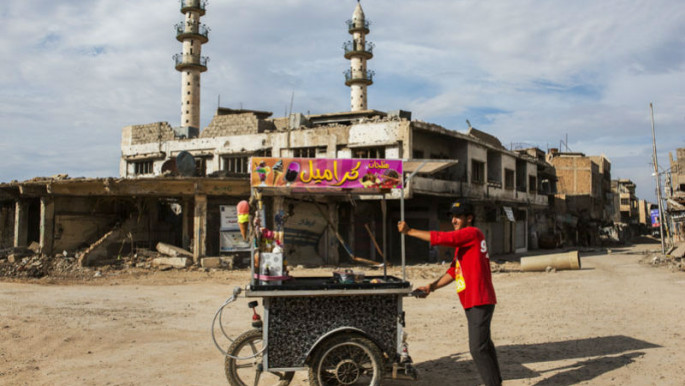 |
| The two famous minarets of the 20th century al-Saffar Mosque [Alessio Mamo] |
The two famous minarets of the 20th century al-Saffar Mosque (pictured above), remain in tact.
The mosque was also known for its proximity to the Our Lady of the Hour Church, the Catholic church founded by Dominican monks.
The close proximity of the two buildings was to symbolise the coexistence of the two religions historically present in Mosul.
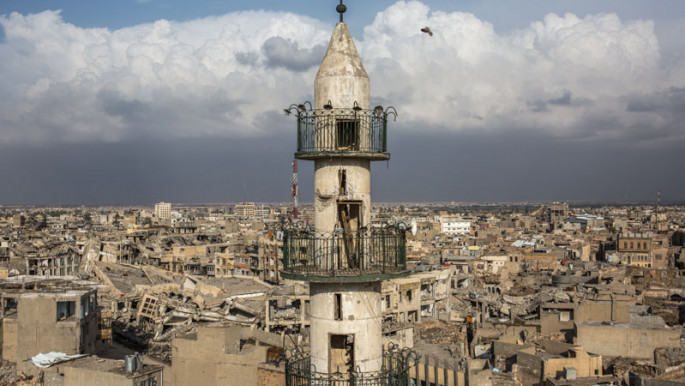 |
| [Alessio Mamo] |
One of the two minarets of the Al-Saffar Mosque rises above the old city of Mosul, on the city's east bank, which was severely damaged by the intensive airstrike campaign against IS.
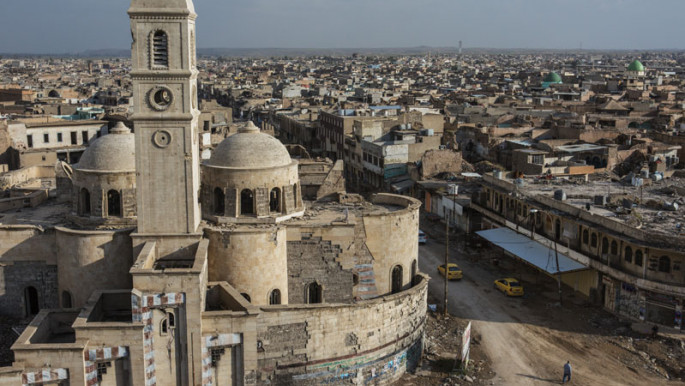 |
| Our Lady of the Hour Church [Alessio Mamo] |
Our Lady of the Hour Church, also known as the Latin Church or al-Sa'a Church in Arabic (pictured above), was a Catholic church in the centre of Mosul.
Built in the 1870s by Dominican monks, it was renowned for its bell which had been donated by the Empress of the French empire Eugenia de Montijo.
Damaged in a bombing during the 2006 Iraq War, the church was almost totally destroyed in April 2016 by IS. The extremists used the church's old library as a training centre for its fighters.
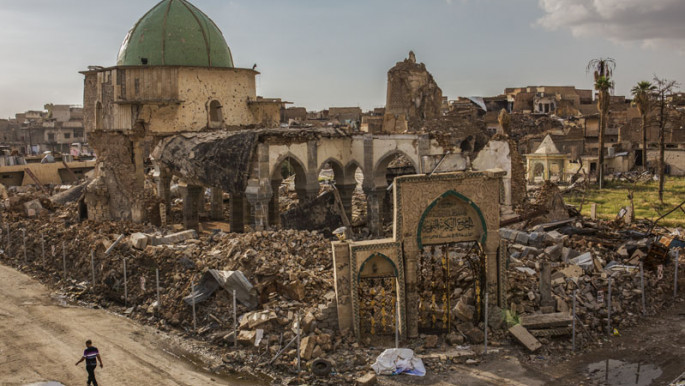 |
| The Great Mosque of al-Nuri [Alessio Mamo] |
The Great Mosque of al-Nuri (pictured above), was built in 1172-1173 by the Turkman Nur al-Din al-Zanghi of the Seljuk Empire, and destroyed in June 2017 by IS during the Battle for Mosul.
It held symbolic importance to the extremists and to its leader Abu Bakr al-Baghdadi, who used it in 2014 to declare the self-styled "caliphate".
According to Mosul's citizens, IS destroyed the mosque in order not to allow any other Imam other than Abu Bakr al-Baghdadi to give a sermon there.
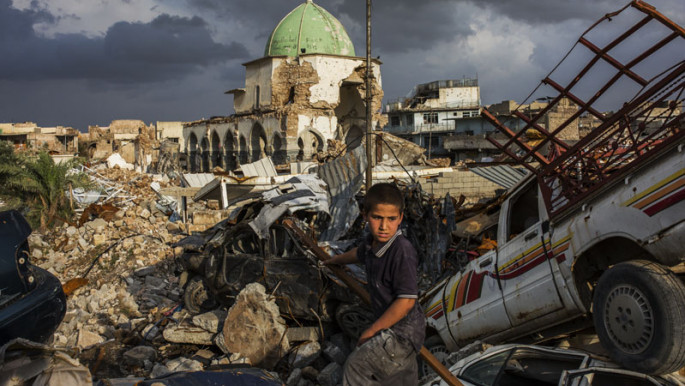 |
| [Alessio Mamo] |
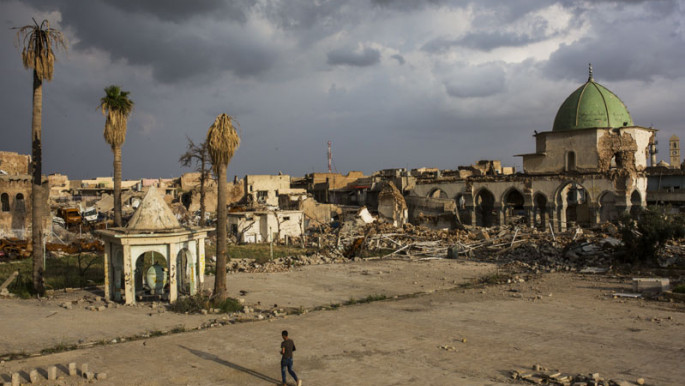 |
| The fountain used to be part of a spacious courtyard [Alessio Mamo] |
One of the only remaining parts of the Great Mosque of al-Nuri is the ablution fountain (pictured above).
The fountain used to be part of a spacious courtyard full of greenery leading out of the prayer hall, which was destroyed along with the rest of the mosque in June 2017.
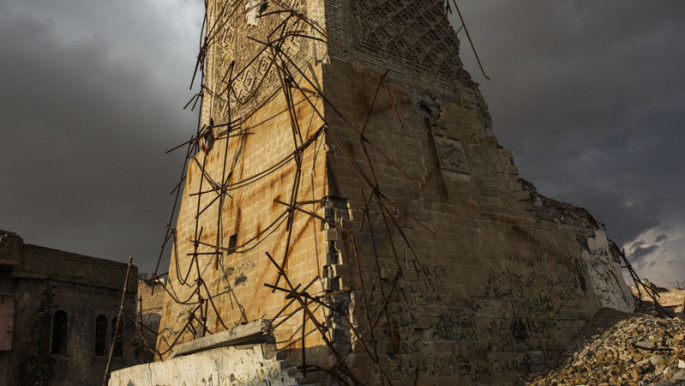 |
| The minaret was nicknamed by some as Iraq's 'Leaning Tower of Pisa' [Alessio Mamo] |
Only the base minaret of the al-Nuri mosque remains. Known as 'al-Hadba', the minaret used to lean slightly, which gave Mosul the nickname 'the hunchback'.
The design of the minaret follows a form originating from neighbouring Iran and central Asia, and shares similarities with other minarets in northern Iraq.
It is also nicknamed by some as Iraq's 'Leaning Tower of Pisa', for its signature tilt. The black flag of the Islamic State was flown from the 45-metre minaret from 2014 to 2017.
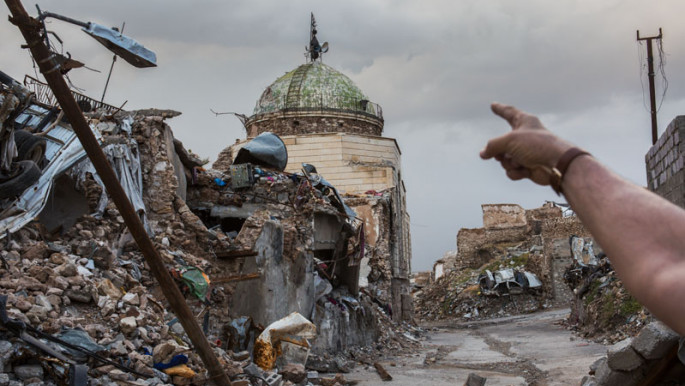 |
| [Alessio Mamo] |
The minaret of the Umayyad Mosque can still be seen, built in Mosul during the Prophet Mohammed's early conquests in 638 AD.
The mosque goes by the name al-Masfi Mosque after one of its patrons Haj Mohammed Masfi, who used large quantities of gold when he restored the building in 1225 AD.
Follow her on Twitter: @MartaDafne
